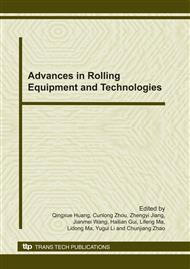p.317
p.321
p.326
p.332
p.340
p.347
p.353
p.361
p.365
Improvement of On-Line Heating Method in the Side Dam for Twin Roll Strip Casting Process
Abstract:
As one of the most advanced technology, twin-roll strip casting technology has a huge advantage compared to conventional casting technology in iron and steel industry. In recent years, therefore, metallurgical workers are favour of the twin-roll strip casting technology and invest a great deal of reseach funding. It has achieved considerable progress. In abroad, there were several advanced iron and steel enterprises which had realized the commercialization of small-scale production. But there is still a long way to go for the mass of industrial production. Because of the very short service life of side dam, side sealing technology is one of the bottlenecks. Based on this, the paper analyzes the reason caused the very short service life of traditional side dam and improves the service life through improving heating mode. That is digging appropriate size of slot on the back of the side dam in the contact with casting roller to install resistance wire for on-line heating. The result indicate that the improved heating mode can make the temperature distribution and stress distribution of the side dam more uniform, decrease temperature gradient and thermal stress and improve stress concentration. It can improve the service life of the side dam in a certain extent.
Info:
Periodical:
Pages:
340-346
Citation:
Online since:
October 2010
Authors:
Keywords:
Price:
Сopyright:
© 2011 Trans Tech Publications Ltd. All Rights Reserved
Share:
Citation:


